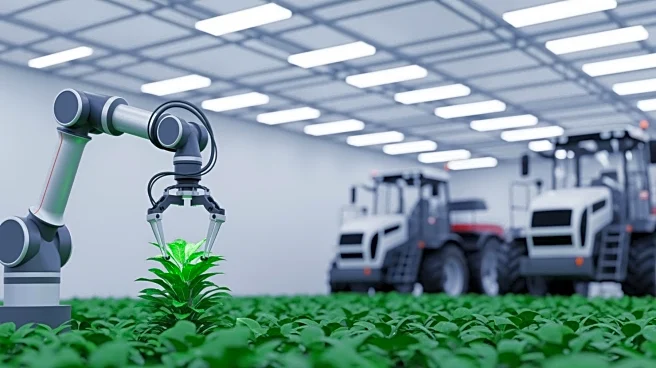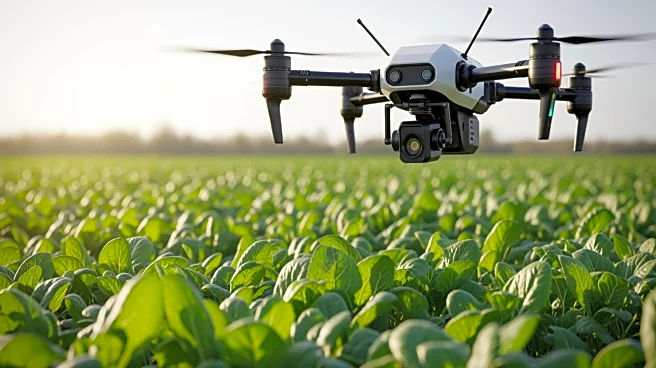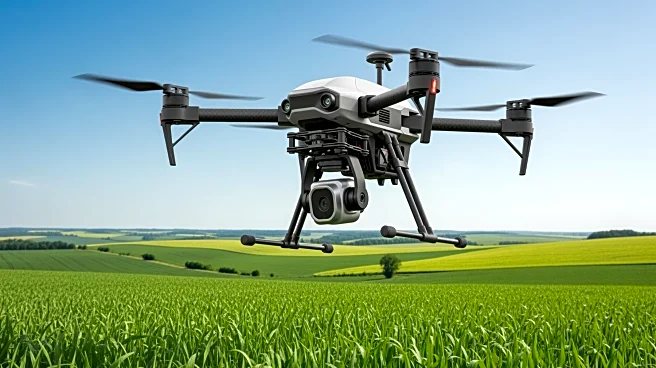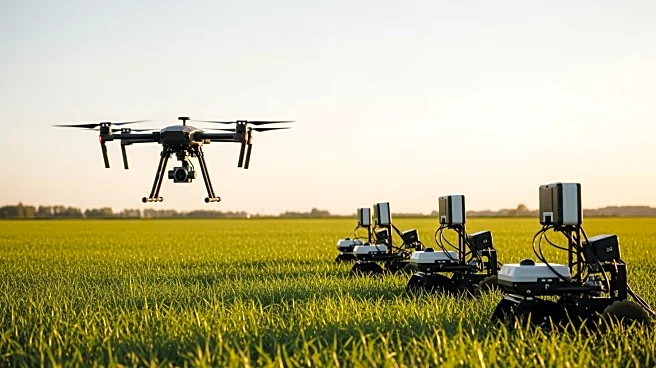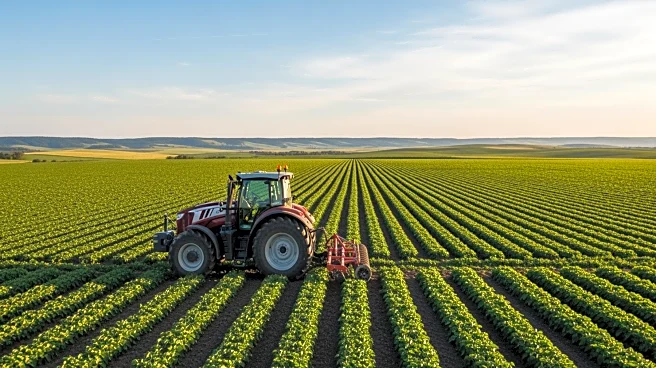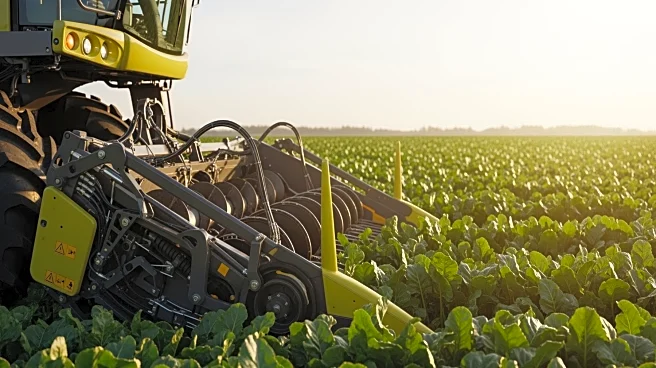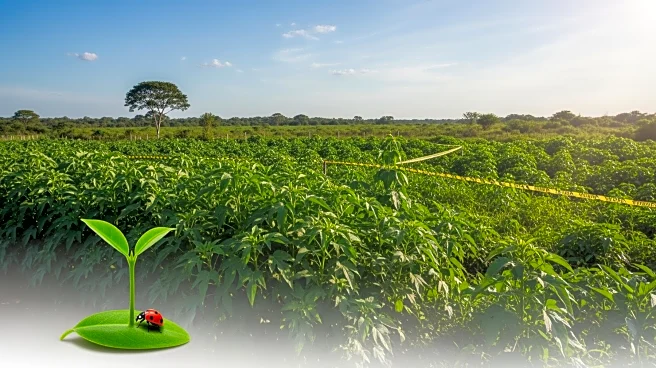What's Happening?
The agricultural industry is undergoing significant transformation through the integration of artificial intelligence (AI) and robotics, enhancing productivity and sustainability. Precision agriculture,
which utilizes GPS, sensors, drones, and data analytics, is optimizing resource use in crop and livestock farming. Robotics and automation are replacing manual labor in tasks like crop harvesting, with advanced systems now capable of delicately picking mushrooms without damage. AI-powered predictive tools are also being developed to forecast agricultural challenges, such as disease outbreaks and pest infestations, allowing for proactive management. These innovations are part of a broader trend towards tech-enabled, data-driven farming practices.
Why It's Important?
The adoption of AI and robotics in agriculture addresses critical challenges such as labor shortages and the need for sustainable farming practices. By optimizing resource use and improving efficiency, these technologies can significantly boost agricultural productivity, ensuring food security and economic stability. The shift towards precision agriculture and AI-driven solutions also supports environmental sustainability by reducing waste and minimizing the ecological footprint of farming. As the agricultural sector becomes more tech-enabled, it is poised to meet the demands of a growing global population while adapting to climate change impacts.
What's Next?
The future of agriculture will likely see increased adoption of AI-driven precision irrigation systems and enhanced supply chain efficiency through predictive analytics. As these technologies become more widespread, farms will rely on AI to guide key decisions, from planting to distribution. The rise of controlled environment agriculture, such as indoor vertical farms, will further transform the industry, increasing output and resilience. Continued investment in AI and robotics will drive innovation, with potential collaborations between tech companies and agricultural stakeholders to develop new solutions. The agricultural industry is set for a major transformation, with technology playing a central role in its evolution.
